What I Learned About Healing My Fatty Liver Using Traditional Indian Food
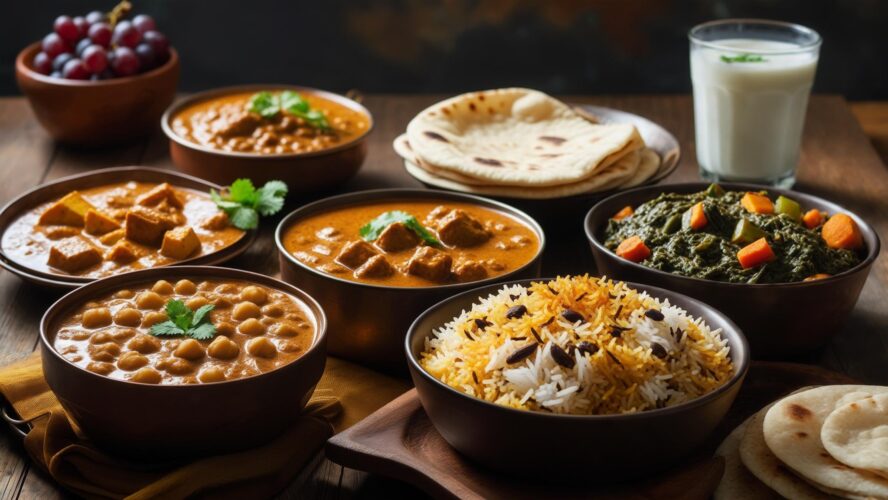
Table of Contents
- The Truth About When You Eat vs. What You Eat
- How I Turned My Spice Rack Into My Medicine Cabinet
- Why I Was Drinking Water All Wrong for Years
- Indian Meal Prep That Actually Works When You’re Busy
- How Moving Cities Completely Changed My Healing Approach
- The Cooking Mistakes That Were Sabotaging My Progress
TL;DR
- Eating your biggest meal between 10am-2pm works with your liver’s natural rhythm instead of against it
- Switching up your spices every few days keeps your body from getting used to them (like changing your workout routine)
- The temperature of water you drink should match your body type – I was drinking ice water when I needed warm
- Traditional food combining (like not eating dal and rice together) actually makes sense when you try it
- Where you live in India affects which foods help vs. hurt – what worked in Delhi didn’t work in Mumbai
- Old-school cooking methods keep the good stuff in your food that modern shortcuts destroy
Three years ago, my doctor told me I had fatty liver disease. I was 34, thought I ate pretty healthy, and honestly had no idea what that even meant. Like most people, I went straight to Google and found a bunch of confusing advice that didn’t seem to fit my Indian lifestyle at all.
Fatty liver disease has become increasingly prevalent, affecting up to 24% of Americans annually according to recent research. While these statistics reflect global trends, the condition is equally concerning in India, where traditional dietary wisdom offers unique solutions that modern medicine is only beginning to understand. When developing a plant-based Indian food approach, these ancient principles become particularly powerful for liver healing.
Research indicates that Non-alcoholic fatty liver disease (NAFLD) affects approximately 24% of US adults, compared to 1.5-6.5% who have NASH, highlighting the widespread nature of this condition that traditional Indian approaches can effectively address.
The hardest part wasn’t changing what I ate – it was explaining to my family why I wasn’t eating the way they expected. My mother-in-law kept asking if I was trying to lose weight, and my husband thought I was being dramatic about “just some liver numbers.” But here’s what I discovered: creating an effective healing plan requires understanding principles that go way beyond just avoiding fried foods and sugar.
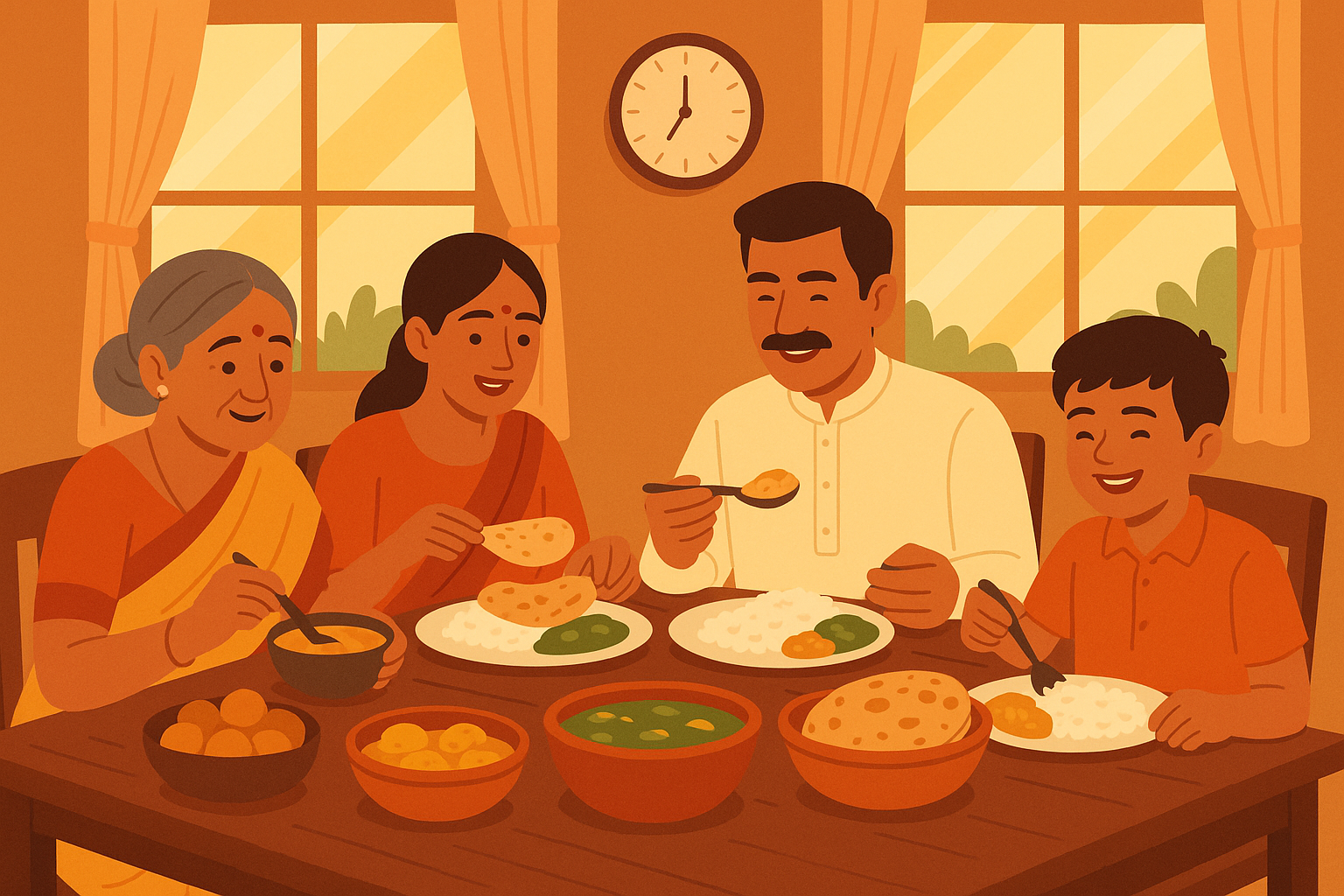
The Truth About When You Eat vs. What You Eat
Look, I’m going to be honest with you – I spent months obsessing over what I was eating while completely ignoring when I was eating it. Turns out, meal timing might be more important than the food itself when you’re trying to heal fatty liver. I learned this the hard way after eating all the “right” foods but seeing barely any improvement in my liver enzymes.
Here’s the thing: your liver works like your phone battery – it charges best at night when you’re not using it. Eating late is like trying to charge your phone while running 10 apps. It’s going to work, but not very well.
Traditional Indian eating patterns, when you actually follow them properly, create a framework that works with your body’s natural rhythms instead of fighting them. This isn’t some mystical concept – it’s about understanding when your liver is naturally trying to detox and heal itself, and not interrupting that process with late-night snacks.
The timing principles I’m about to share work particularly well when combined with intermittent fasting approaches designed specifically for women, creating a system that actually makes sense for your liver’s healing process.
Why Eating Like Our Grandparents Actually Works
The traditional Indian practice of eating your biggest meal between 10am-2pm isn’t just cultural tradition – it’s perfectly timed for when your liver’s metabolism is most active. Think of it like this: your liver has office hours, and you want to give it the most work to do when it’s at its peak performance, not when it’s trying to clock out for the day.
I used to eat my biggest meal at 8pm after work, thinking I was being healthy by having a light breakfast. My liver enzymes were through the roof. Once I switched to having my largest meal between 10am-2pm, everything changed. My energy improved, my digestion got better, and my follow-up blood work showed real improvement.
The crazy part? I wasn’t even eating different foods – just eating them at different times. Your liver works hardest to process fats and detoxify during specific hours, and eating against this natural rhythm forces it to work overtime when it should be resting and healing.
The Eating Window That Actually Fits Real Life
Starting your eating window at 10am with a substantial breakfast and finishing by 6pm lets your liver’s natural detox cycle (10pm-2am) work without having to deal with digesting your dinner at the same time. This mirrors how people used to eat in India before our modern lifestyle pushed meals later into the evening.
A typical healing day looks like this: masala oats at 10am, a proper lunch of dal, sabzi, and roti at 1pm, and a light dinner of khichdi and vegetables by 6pm. This timing allows your liver to focus on cleaning house during the crucial 10pm-2am window without the burden of processing late meals.
I know what you’re thinking – “But I work until 7pm, how am I supposed to eat dinner by 6?” Trust me, I had the same problem. Some weeks I nail this timing perfectly. Other weeks, work gets crazy and I’m eating dinner at 10 PM while answering emails. That’s okay – this isn’t about being perfect, it’s about doing better most of the time.
Adjusting Food Temperature Based on How Your Body Feels
Here’s something I wish someone had told me earlier: adjusting your meal temperatures based on the season and how your body naturally runs can make a huge difference. During summer, I focus on cooling foods like cucumber raita and coconut-based dishes during the hottest part of the day. Come monsoon season, I switch to ginger and turmeric-heavy preparations that help with digestion when the weather makes everyone feel sluggish.
This isn’t just about comfort – it’s about giving your liver the right environment to heal. During summer, my body naturally craves cooling foods, and fighting that craving by eating hot, spicy meals actually creates more internal heat that my liver has to deal with.
Food Combining Rules That Actually Make Sense When You Try Them
Traditional Indian food combining principles can dramatically reduce your liver’s workload by making digestion easier and preventing the formation of toxins that contribute to fatty deposits. These aren’t arbitrary rules – they’re based on how different foods need different digestive processes and timing.
| Food Combination | Traditional Rule | Why It Helps Your Liver | How I Do It |
|---|---|---|---|
| Dal + Rice | Separate by 2-3 hours OR add digestive spices | Reduces fermentation and toxic byproducts | Dal at lunch, rice at dinner, or add hing and jeera when combining |
| Fruit + Meals | 30 minutes before OR 2 hours after | Prevents sugar fermentation | Morning fruit before breakfast or evening fruit as standalone snack |
| Milk + Citrus | Never combine | Prevents curdling and digestive stress | Drink milk separately from orange/lemon-based foods |
| Raw + Cooked | Try not to mix | Reduces digestive confusion | Eat salads before cooked meals or as separate snacks |
Why Separating Dal and Rice Actually Works
Look, I know this sounds extreme, but hear me out. When I started eating my dal at lunch and saving rice for dinner, my bloating disappeared within a week. The constant heaviness I felt after meals was gone. When I do combine them, adding hing and jeera makes a huge difference in how I feel afterward.
Separating dal (protein) and rice (starch) consumption by 2-3 hours when possible, or combining them with digestive spices, reduces fermentation in your gut. This prevents the creation of toxic byproducts that your already-stressed liver has to process while trying to heal itself.
The Fruit Timing Thing Nobody Talks About
This was probably the hardest change for me to make. I used to end every meal with fruit, thinking I was being healthy. The gas and bloating I experienced was actually my body telling me that the fruit was fermenting with my meal, creating alcohol and other compounds my liver had to work overtime to process.
Consuming fruits 30 minutes before meals or 2 hours after prevents this fermentation. Traditional Indian practice of eating fruit as the first food of the day supports this and maximizes the liver-cleansing benefits of fruit enzymes. Now I have my fruit mid-morning or as an evening snack, and the difference in how I feel is remarkable.
Balancing Tastes Without Overthinking It
Traditional Indian meals naturally include all six tastes (sweet, sour, salty, pungent, bitter, astringent), but for liver healing, I emphasize bitter tastes through karela and methi, and astringent tastes through turmeric and pomegranate, while going easy on sweet and salty tastes. This approach satisfies my taste buds while giving my liver exactly what it needs to heal.
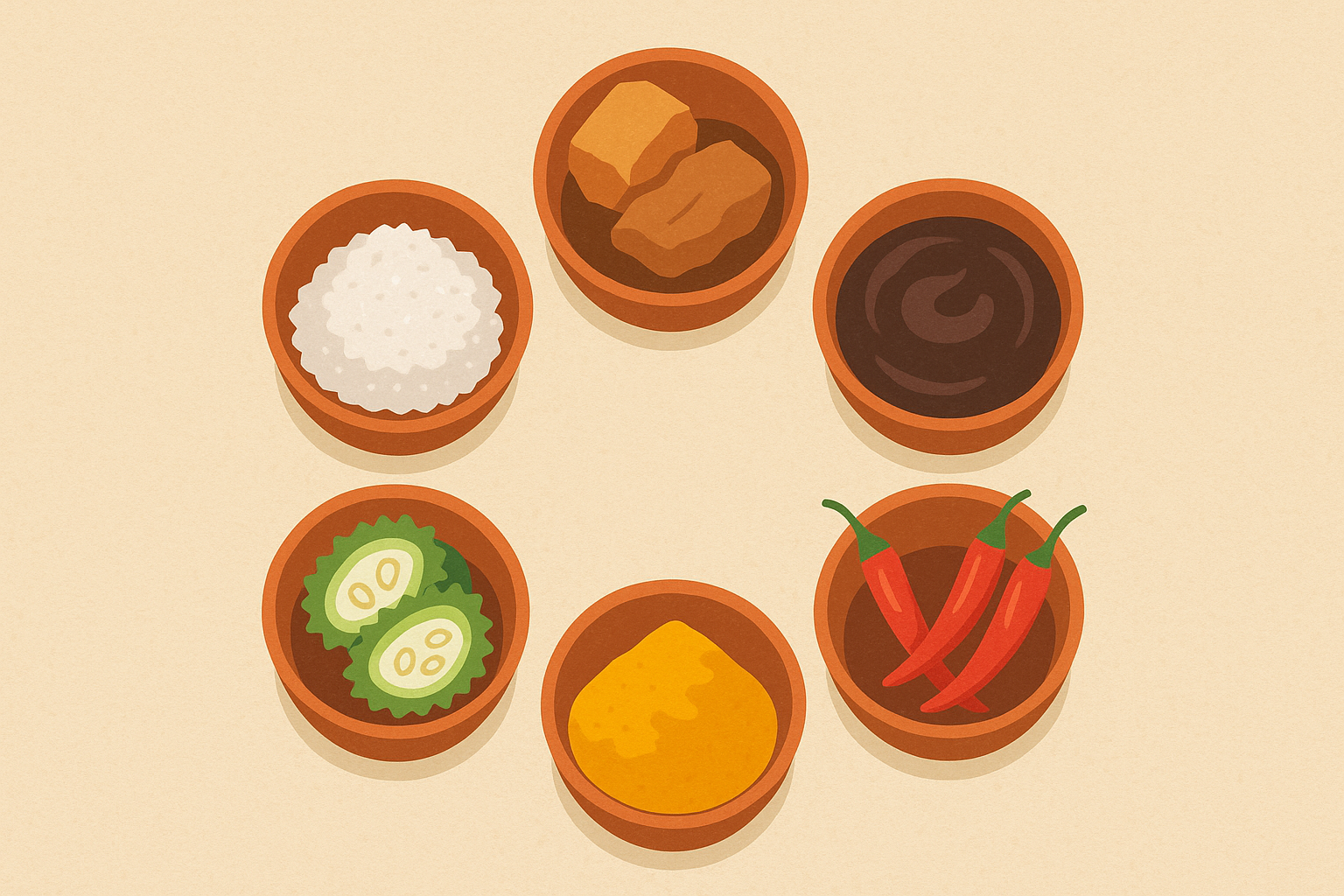
How I Turned My Spice Rack Into My Medicine Cabinet
Everyone talks about turmeric like it’s some miracle cure, but I discovered something interesting: rotating different hepatoprotective spices actually works better than sticking to the same ones every day. Your body adapts to therapeutic compounds, kind of like how your muscles get used to the same workout routine. Changing up your spices keeps the healing effects strong.
I used to just dump turmeric into everything, thinking more was better. What I learned is that strategic rotation of different spice combinations creates better results than using the same spices every single day. This isn’t about adding random spices to your food – it’s about understanding how different spices target specific aspects of liver healing.
The therapeutic spice combinations I’ll share complement the principles found in simple digestive health approaches, creating a system that addresses both symptoms and root causes.
My Simple 3-Phase Spice Rotation
Instead of trying to become a spice expert overnight, I literally started with just switching between turmeric one week and ginger the next. Once that felt normal, I added more variety. Now I rotate between inflammation-reducing, detox-supporting, and regeneration-promoting spice combinations across my week. This prevents my body from adapting to any single approach while ensuring I’m supporting different aspects of healing.
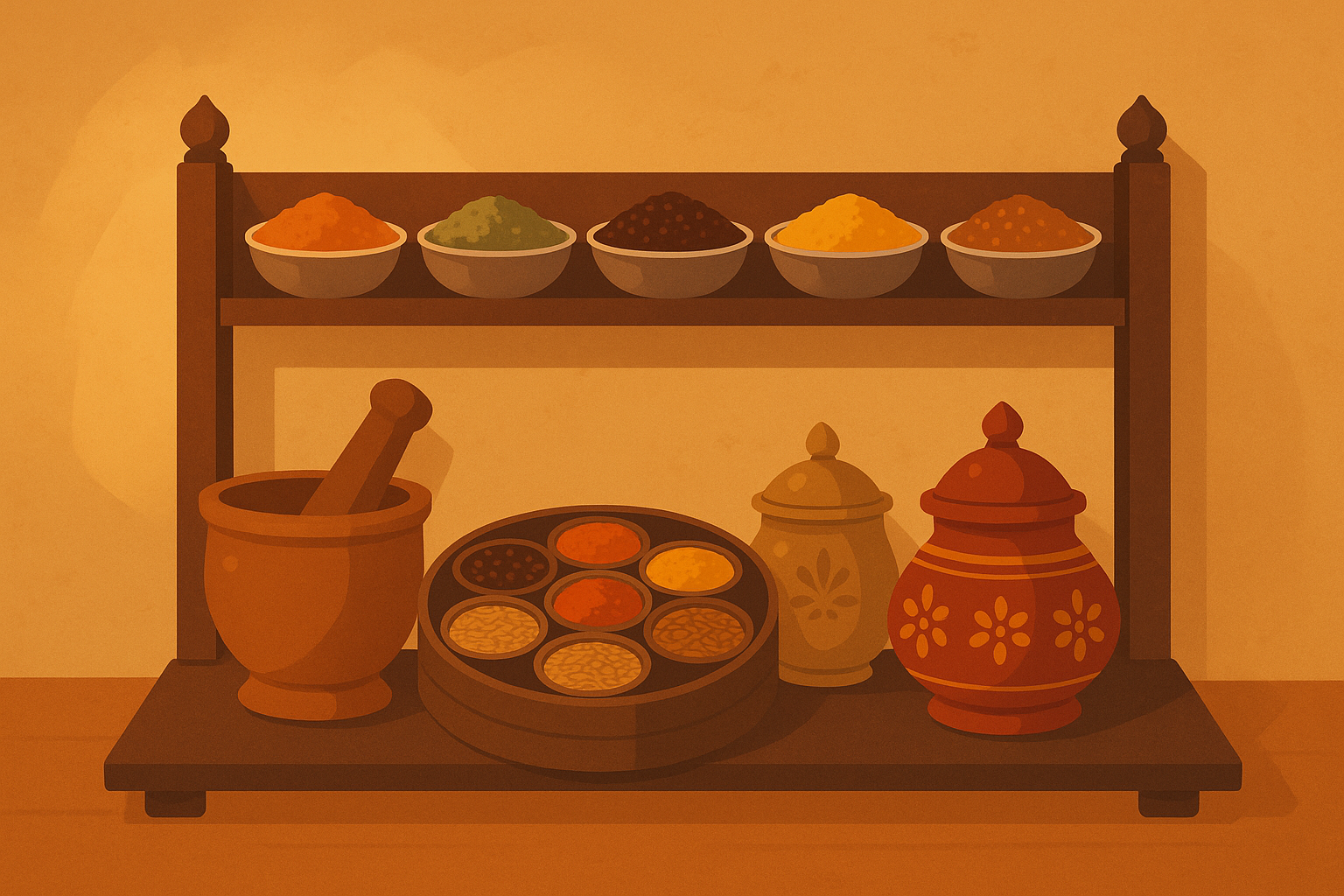
Days 1-2: Cooling Down the Inflammation
During these first two days, I focus on turmeric, ginger, and black pepper combinations in golden milk, dal, and vegetable preparations. This reduces liver inflammation and improves insulin sensitivity. The black pepper increases turmeric absorption by 2000%, which means you’re getting maximum anti-inflammatory benefit.
I make golden milk with fresh turmeric, ginger, and a pinch of black pepper every morning during this phase. I also add this combination to my dal tempering and vegetable stir-fries. The warmth feels good, and I can actually feel the anti-inflammatory effects within a few days.
Days 3-5: Supporting Natural Detox
I prepare a detox tea by boiling equal parts coriander seeds, fennel, and cumin in water for 10 minutes. Sipping this throughout the day keeps my digestion strong while supporting my liver’s natural detox processes. I also use this spice blend as a base for vegetable seasonings during these three days.
These spices help your liver process and eliminate the toxins that have been building up while ensuring your digestion stays strong enough to absorb healing nutrients. It’s like giving your liver’s cleanup crew the right tools to do their job.
Days 6-7: Rebuilding What’s Been Damaged
During the regeneration phase, I start my morning with fenugreek seed water (1 tsp seeds soaked overnight), add ajwain to my dal tempering, and include mustard seed tadka in my vegetables. This phase focuses on actually rebuilding healthy liver tissue and restoring optimal function rather than just managing symptoms.
Incorporating fenugreek seeds, ajwain (carom seeds), and mustard seeds stimulates liver cell regeneration and optimizes bile production for fat metabolism. This systematic approach ensures my liver receives specific regenerative compounds when it’s most receptive to healing.
The Micro-Dosing Approach That Doesn’t Shock Your System
I learned this lesson after trying to take large doses of neem powder and ending up with terrible stomach cramps. Small, consistent doses work much better and don’t shock your system. Strategic timing of bitter herbs in tiny amounts can stimulate liver function without overwhelming your digestive system.
Morning Liver Wake-Up That Actually Feels Good
I mix just a pinch of neem powder in warm water and drink it slowly about 30 minutes before my first meal. The bitter taste actually becomes something I look forward to because I know it’s preparing my digestive system for the day ahead. This gentle morning ritual kickstarts your liver’s daily functions without the harsh shock that coffee or aggressive supplements can create.
Mid-Day Integration When Your Digestion Is Strongest
I add karela (bitter gourd) or methi (fenugreek leaves) to my lunch preparations. The strong digestive fire at midday helps process these bitter compounds effectively, and I actually find them more palatable when my hunger is at its peak. Including bitter vegetables during your largest meal when digestive fire is strongest maximizes therapeutic benefit while maintaining palatability.
Why I Was Drinking Water All Wrong for Years
I used to chug ice-cold water all day, thinking I was staying hydrated and being healthy. What I didn’t realize is that cold water was actually dampening my digest ive fire and making my liver work harder. Once I started drinking water according to my body type and constitution, my digestion improved dramatically.
Beyond basic water intake, traditional Indian hydration methods using specific water temperatures and timing can dramatically enhance liver detoxification while supporting overall health. Most people drink water wrong for their constitution, which actually impedes healing rather than supporting it.
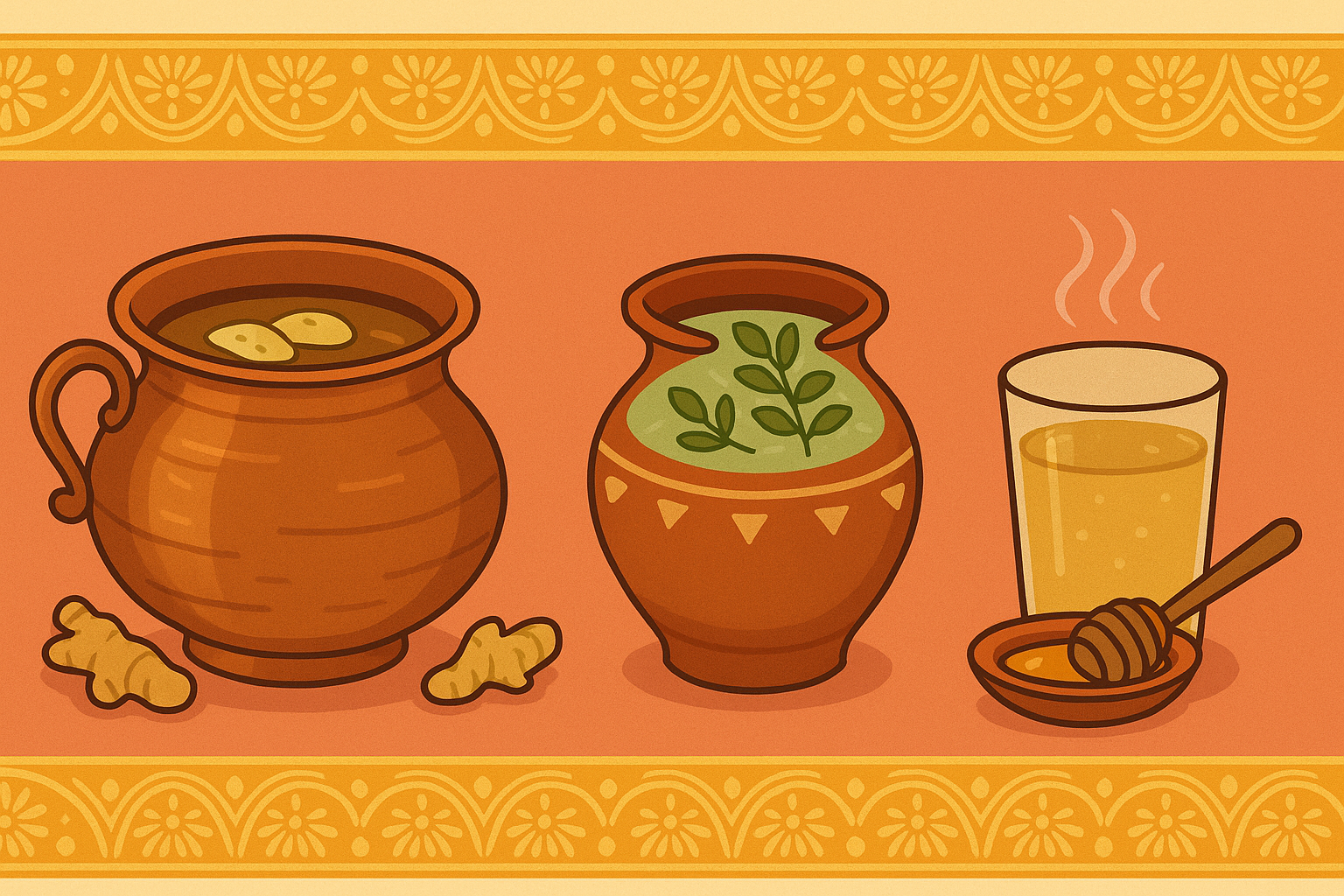
These hydration principles work synergistically with drinking vinegar approaches for gut health, creating a comprehensive system that supports both liver function and digestive wellness.
Matching Your Water to Your Body Type
Customizing your hydration approach based on how your body naturally runs – using water temperature, and herbal infusions – supports liver function while balancing your constitution. This prevents the metabolic confusion that occurs when you hydrate against your body’s natural needs.
If You Run Cold: The Warm Water Protocol
If you have dry skin, constipation, or anxiety alongside fatty liver, sipping warm water throughout the day, adding a pinch of rock salt and ginger supports circulation and elimination. Cold water actually impedes digestion and circulation if you’re someone who runs cold naturally.
As someone who tends to run cold, I keep a thermos of warm water with a pinch of rock salt and fresh ginger slices. Sipping this throughout the day keeps my circulation moving and supports the elimination pathways my liver depends on. It took some getting used to, but now cold water actually feels shocking to my system.
If You Run Hot: Cooling Without Shocking
If you’re dealing with liver inflammation and tend to run hot, get angry easily, or have acidity issues, room temperature water infused with cooling herbs reduces internal heat. Ice-cold water can actually shock the system and increase internal heat in people who naturally run hot.
Try room temperature water infused with coriander seeds, rose petals, or mint. I prepare this the night before and let the herbs infuse slowly, creating a gentle cooling effect without shocking my system. The key is cooling without creating a temperature shock that your liver has to deal with.
If You’re Sluggish: Stimulating Without Overdoing It
If you’re experiencing sluggish metabolism, weight gain, or lethargy, using hot water with honey (never heated together) and warming spices stimulates metabolism and reduces sluggishness. Room temperature water actually increases the sluggishness that’s contributing to fat accumulation in your liver.
For people who tend to be sluggish, hot water with a teaspoon of honey and a pinch of cinnamon can kickstart metabolism. The key is adding the honey after the water cools slightly – heating honey creates toxins that burden your liver.
Indian Meal Prep That Actually Works When You’re Busy
Sunday meal prep used to stress me out until I realized I didn’t need to cook entire meals. Now I just make a big batch of spice paste, cook some dal, and chop vegetables. Takes maybe an hour, and I’m set for the week. This isn’t about making sad, reheated curry – it’s about using traditional preservation and preparation methods that actually improve with time.
I work 10-hour days, so meal prep became essential for sticking to my healing protocol. The game-changer was realizing that many Indian dishes actually taste better the next day because the spices have time to meld together.
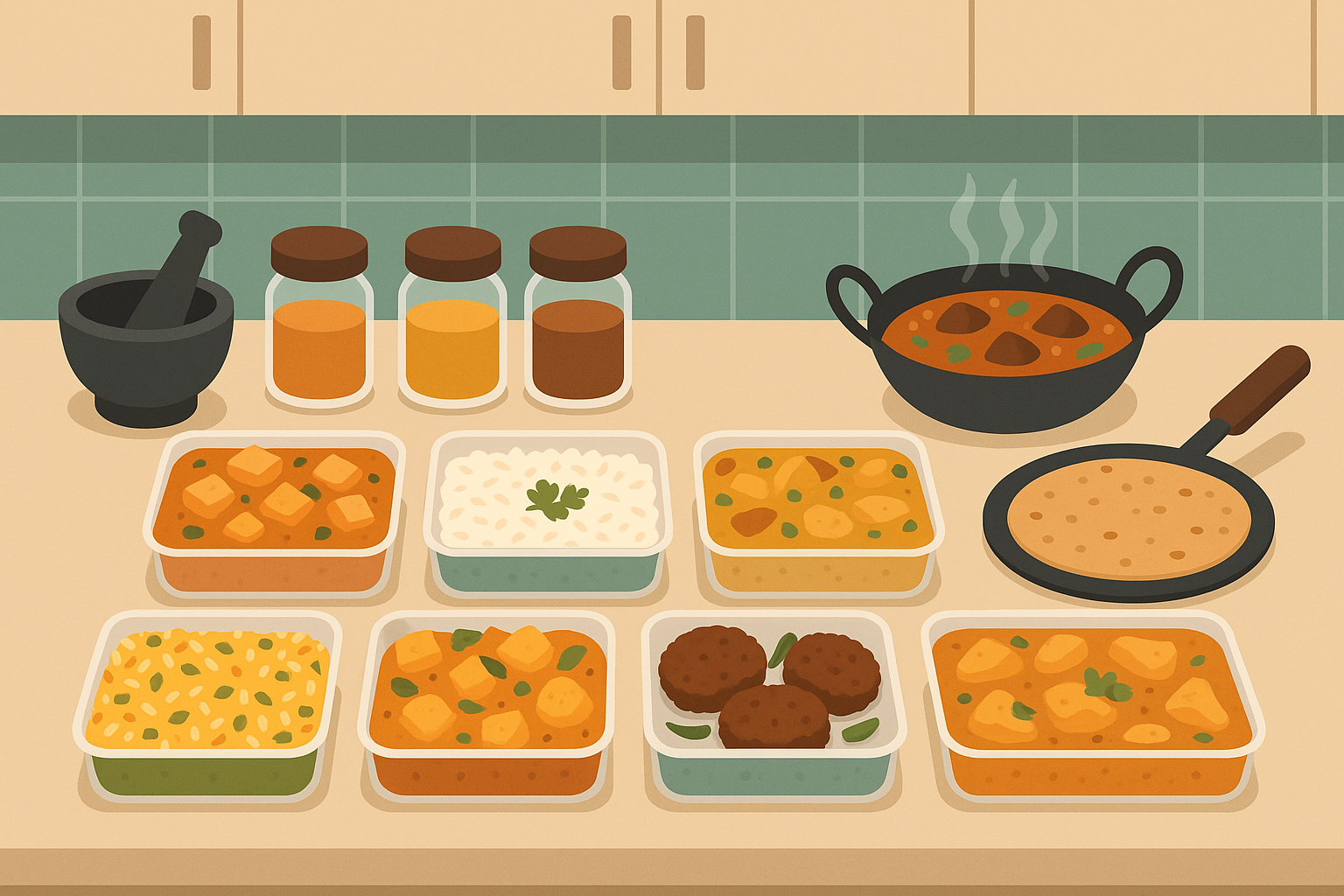
The meal prep strategies I’ll share can be enhanced with proper oatmeal preparation techniques that support liver health while providing sustained energy throughout your healing journey.
My Sunday Foundation That Sets Me Up for Success
Every Sunday, I spend about 3 hours preparing the building blocks for my week. This isn’t about cooking complete meals – it’s about creating flavor bases and components that make weekday cooking effortless. This prevents the weekday scramble that leads to poor food choices while ensuring I stay consistent with my healing approach.
Spice Pastes and Oils That Transform Everything
My ginger-garlic-turmeric paste keeps for a full week in the refrigerator and adds instant flavor and healing compounds to any dish. I make a large batch by grinding equal parts fresh ginger and garlic with turmeric root, storing it in small glass containers. These flavor bases actually develop more complex tastes over time while maintaining their therapeutic properties.
I also prepare therapeutic cooking oils infused with curry leaves, mustard seeds, and hing. This enables quick meal assembly during the week and ensures I’m getting liver-supportive compounds in every meal.
My Weekly Meal Prep Checklist:
- Prepare ginger-garlic-turmeric paste (1 week supply)
- Make coriander-cumin-fennel powder blend
- Infuse cooking oil with curry leaves and mustard seeds
- Soak and cook 3 varieties of dal with healing spices
- Prepare base vegetables (onions, tomatoes, ginger) for quick cooking
- Make fresh herb chutneys (mint, coriander) for the week
- Prepare healing herbal teas in concentrate form
Smart Dal and Grain Strategies
I cook my dals with whole spices during the prep session, then portion them into glass containers. When I reheat them during the week, I add fresh vegetables and a spoonful of my prepared spice paste. The flavors are actually more developed than if I cooked everything fresh each day.
Cooking quinoa, brown rice, and various dals in large batches with liver-supportive spices, storing in portions that can be quickly reheated with fresh vegetables throughout the week ensures I always have healing protein and complex carbs ready. Pre-cooking with spices actually improves digestibility and therapeutic value.
Leftover Transformation That Keeps Things Interesting
Converting planned leftovers into entirely different meals using traditional Indian techniques prevents boredom while maintaining therapeutic consistency. This approach makes my meal plan feel varied and interesting rather than repetitive and medicinal.
One Dal Becomes Three Different Meals
Yesterday’s moong dal becomes today’s sambhar with added vegetables and tamarind, tomorrow’s thin rasam with tomatoes and black pepper, and the day after, I mix it with chopped vegetables and make protein-rich pancakes. Each transformation provides different therapeutic compounds while using the same base ingredient.
Vegetable Remix Magic
Transform yesterday’s palak sabzi into today’s palak paratha stuffing, tomorrow’s palak soup with coconut milk, and day four’s palak-mint chutney. Each preparation method extracts different nutrients while keeping meals interesting and therapeutically diverse.
Using leftover sabzi as stuffing for parathas, blending into soups with coconut milk, or transforming into chutneys with herbs and spices maintains nutrient density across multiple meals while creating completely different eating experiences.
How Moving Cities Completely Changed My Healing Approach
When I moved from Delhi to Goa, I had to completely change my approach. The humidity made me feel sluggish all the time, and the same foods that helped me in Delhi were making me feel worse. Turns out, your location really does matter when it comes to healing your liver.
Most meal plans ignore how regional Indian climates, water quality, and local food availability dramatically impact liver health outcomes. Living in Mumbai versus Delhi requires completely different approaches to liver healing. The humidity, air quality, water mineral content, and seasonal patterns all affect how your liver processes food and toxins.
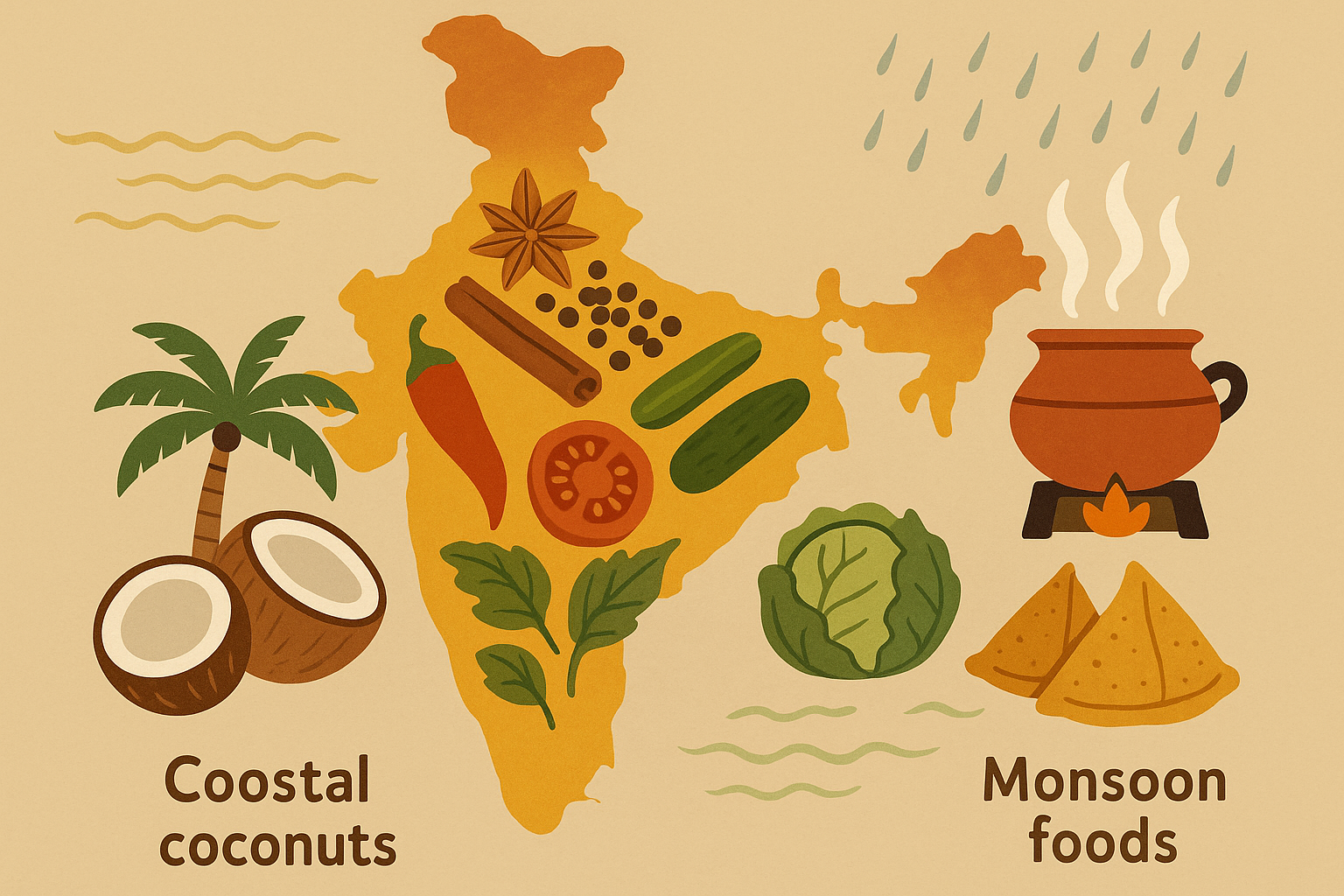
Understanding these regional variations becomes particularly important when considering hydrating foods for different seasons, as what works in coastal regions may be counterproductive in arid climates.
Coastal vs. Inland: Different Problems, Different Solutions
Coastal Indians face different liver challenges due to humidity, seafood availability, and coconut-based cooking, while inland populations deal with dry climates, wheat-heavy diets, and different seasonal patterns that require distinct therapeutic approaches. What heals in Mumbai might harm in Delhi.
Managing Coastal Humidity and Feeling Sluggish
When I lived in Chennai, I had to completely revamp my spice usage. Black pepper, dry ginger, and long pepper became my daily companions to counteract the heavy, damp feeling that coastal humidity creates in your body. High humidity increases sluggishness and liver congestion, so emphasizing warming, drying spices while reducing coconut milk to twice weekly maximum prevents the dampness that clogs liver function.
Dealing with Inland Dryness and Heat
Moving to Rajasthan taught me that bottle gourd, ridge gourd, and ash gourd aren’t just vegetables – they’re medicine for liver inflammation caused by dry heat. I started using ghee much more liberally to counteract the drying effects of the climate. Dry climates increase inflammation, so incorporating more cooling foods while using ghee generously counteracts environmental dryness affecting liver function.
Altitude Changes Everything
During my time in Shimla, I had to increase my fat intake significantly. Walnuts, almonds, and extra ghee became essential for maintaining liver function in the thin mountain air. High-altitude regions require increased caloric density and warming foods to support liver metabolism, while plains dwellers need lighter, more cooling approaches.
High-Altitude Adjustments That Actually Work
Above 3000 feet, increasing healthy fats by 20% through nuts, seeds, and ghee while emphasizing warming spices supports circulation and liver metabolism. The thin air and cold temperatures require more metabolic fuel for proper liver function.
Plains Optimization for Hot Climates
In flat, hot regions, emphasizing water-rich vegetables while using cooling spices prevents liver overheating during peak summer months. The same meal plan that works in the mountains could create dangerous heat accumulation in the plains.
Monsoon Modifications That Work Everywhere
During monsoon season across all regions, increasing digestive fire with ginger, hing, and ajwain while reducing raw foods and emphasizing cooked, warm meals prevents digestive weakness that burdens the liver. The dampness of monsoon requires universal adjustments regardless of your base location.
| Region | Climate Challenge | Liver Impact | Healing Foods | Spices to Emphasize | Foods to Avoid |
|---|---|---|---|---|---|
| Coastal | High humidity, heat | Sluggish metabolism, congestion | Fish, coconut (limited), leafy greens | Black pepper, dry ginger, long pepper | Excess coconut milk, heavy dairy |
| Inland Plains | Dry heat, dust | Liver inflammation | Bottle gourd, cucumber, melons | Coriander, fennel, mint | Spicy foods, excess salt |
| Mountains | Cold, thin air | Slow metabolism, circulation issues | Nuts, ghee, warming vegetables | Cinnamon, cardamom, cloves | Cold foods, raw vegetables |
| Monsoon (All) | Dampness, low digestive fire | Toxin accumulation, weak digestion | Cooked foods, warming spices | Ginger, hing, ajwain | Raw foods, cold beverages |
The Cooking Mistakes That Were Sabotaging My Progress
I was doing everything right on paper – eating turmeric, bitter gourd, leafy greens – but my cooking methods were destroying most of the beneficial compounds. Once I learned traditional preparation techniques that actually preserve the healing properties of foods, my results improved dramatically.
Traditional Indian cooking methods can either enhance or destroy crucial micronutrients needed for liver regeneration. Understanding which techniques preserve therapeutic compounds while maintaining authentic flavors creates exponentially more powerful healing meals. Many people eat the right foods but prepare them in ways that eliminate their healing potential.
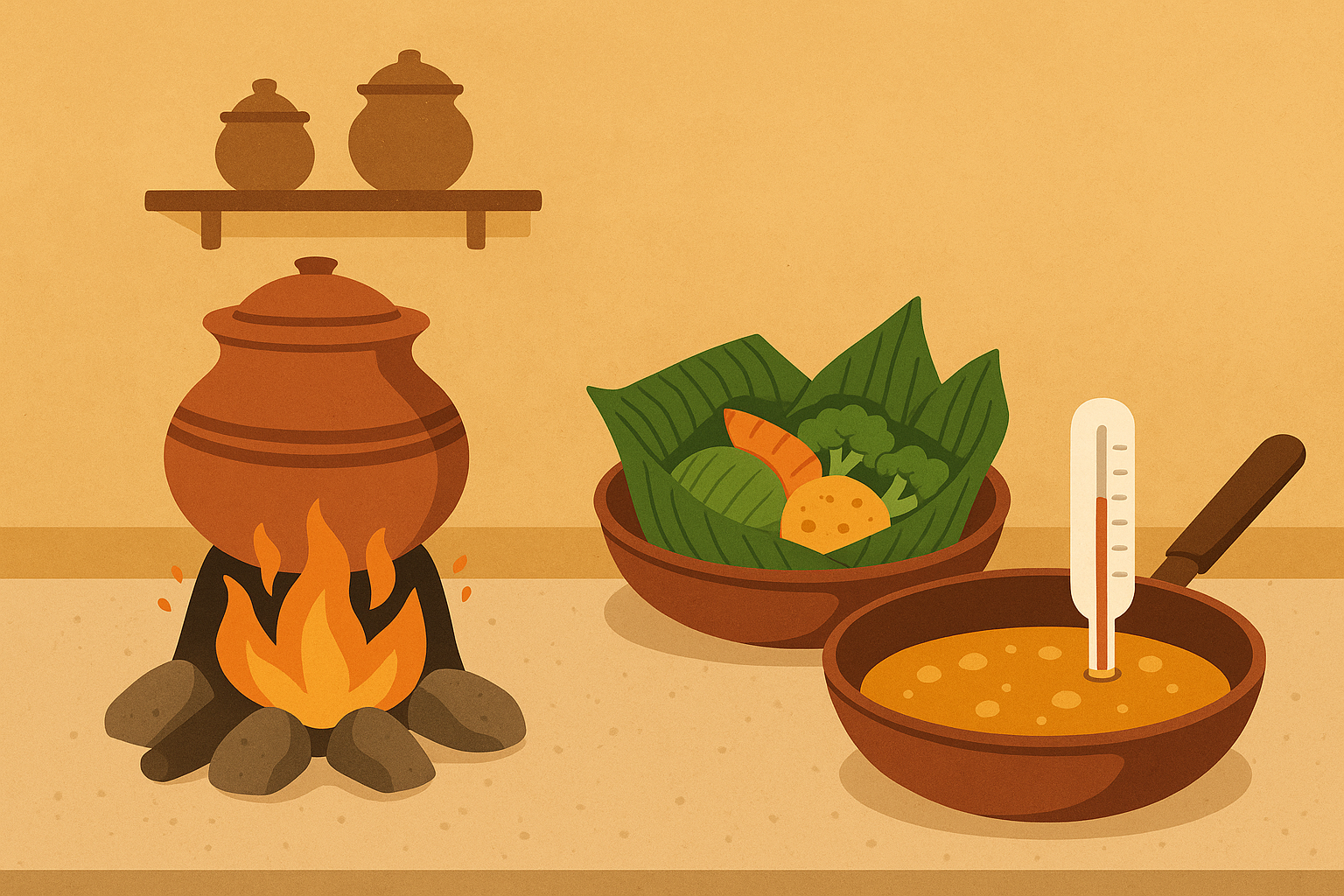
The cooking techniques I’ll share align perfectly with understanding proper cooking oil smoke points, ensuring you maximize nutrient retention while avoiding the creation of harmful compounds that burden your liver.
Cooking Techniques That Keep the Good Stuff In
Traditional Indian cooking methods weren’t just about flavor – they were about maximizing nutritional and therapeutic value. These techniques can preserve or enhance liver-supportive compounds while modern shortcuts often destroy them.
Slow Cooking with the Lid On Tight
I invested in a heavy-bottomed pot with a tight-fitting lid specifically for what’s called dum cooking – basically cooking with the lid on tight and heat turned way down, letting everything steam together slowly. The difference in nutrient retention and flavor development is remarkable compared to regular pressure cooking or stovetop methods.
Cooking vegetables and dals using this method (sealed pot, low heat) preserves heat-sensitive B-vitamins and antioxidants crucial for liver detoxification while intensifying flavors naturally. This slow, sealed cooking method actually concentrates therapeutic compounds rather than destroying them.
Research shows that vitamin E’s antioxidant properties protect liver cells from free radical damage, reducing inflammation and oxidative stress while preventing lipid peroxidation and stabilizing cell membranes, making proper cooking methods essential for preserving these healing compounds.
Getting Oil Temperature Right
Wrong temperatures destroy the very compounds you’re trying to get. I learned to heat different oils to specific temperatures – mustard oil to smoking point for antimicrobial benefits, coconut oil to medium heat to preserve medium-chain triglycerides, and sesame oil to low heat to maintain vitamin E content. This maximizes therapeutic value instead of creating harmful compounds.
Fermentation Timing That Actually Helps Instead of Hurts
Traditional Indian fermented foods provide probiotics essential for liver health, but timing and preparation methods dramatically impact their therapeutic value. Over-fermentation or under-fermentation can create compounds that actually burden your liver rather than heal it.
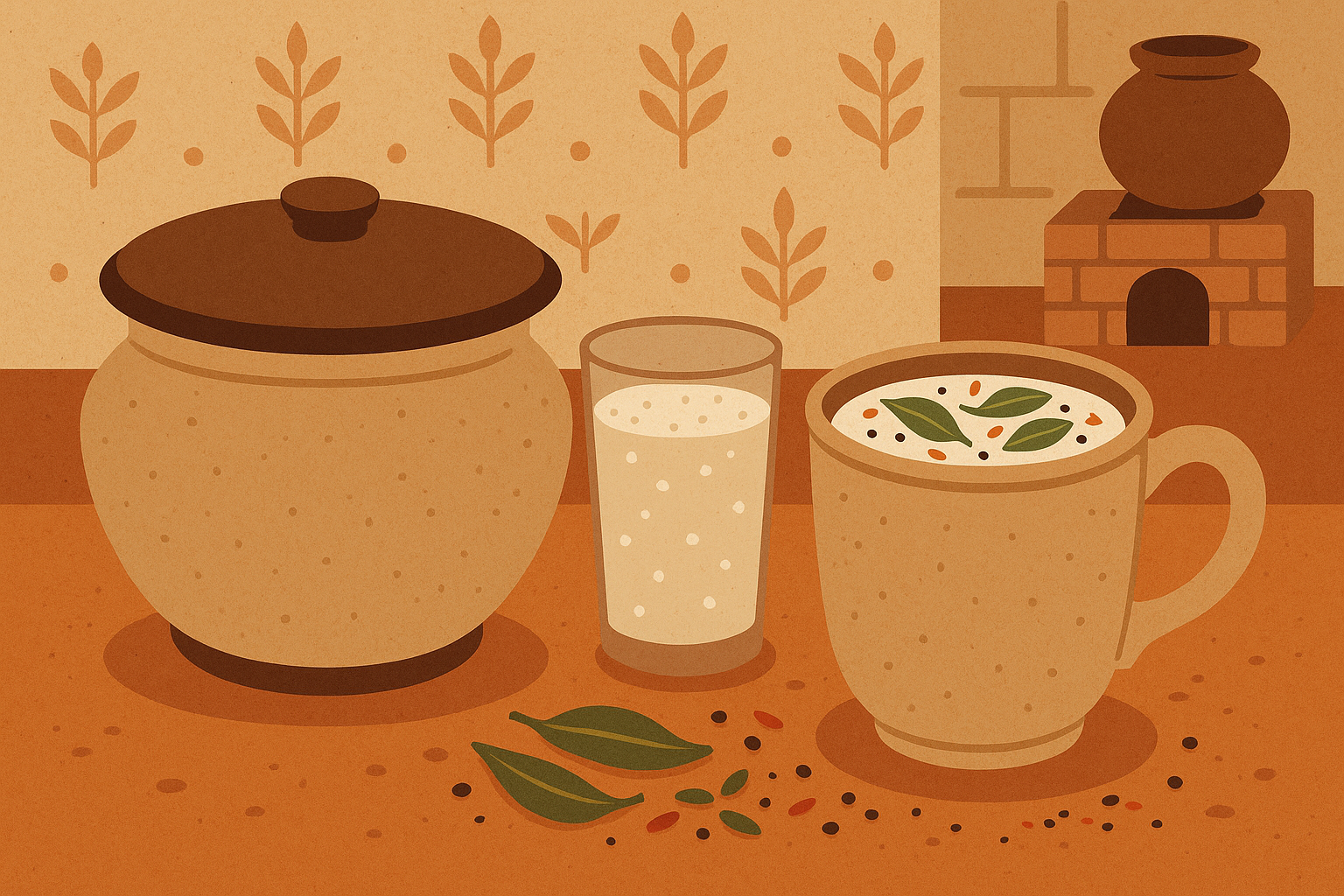
Getting Fermentation Just Right
I learned to test my fermentation by smell and texture rather than just timing. Properly fermented batter has a pleasant, tangy aroma without any sharp or alcoholic notes that indicate over-fermentation. Fermenting idli/dosa batter for exactly 8-12 hours in warm conditions maximizes beneficial bacteria while preventing harmful bacterial overgrowth that could burden the liver.
Adjusting for the Weather
Temperature affects fermentation speed dramatically, and ignoring this creates inconsistent results. I reduce fermentation time by 25% during summer months and extend by 25% during winter to maintain consistent probiotic levels while preventing over-fermentation that creates liver-taxing compounds.
Strategic Fermented Drinks
Including homemade buttermilk with roasted cumin and black salt daily, and fermented rice water twice weekly supports the gut-liver connection while maintaining electrolyte balance. These traditional fermented drinks provide targeted therapeutic benefits when prepared and timed correctly.
Studies indicate that the Indian meal plan for fatty liver focuses on liver-friendly foods to support detoxification and reduce fat accumulation, with spices having anti-inflammatory properties that benefit liver health, emphasizing the importance of proper preparation methods to maximize these therapeutic effects.
Traditional Fermentation Timeline Checklist:
- Summer fermentation: 6-8 hours for idli batter, 4-6 hours for buttermilk
- Winter fermentation: 12-15 hours for idli batter, 8-10 hours for buttermilk
- Monitor temperature: 80-90°F optimal for most fermentation
- Check for proper sourness: tangy but not sharp or alcoholic smell
- Store fermented foods properly: refrigerate after optimal fermentation
- Consume within 2-3 days of fermentation for maximum benefit
Are you struggling to implement these traditional healing methods while managing your busy modern lifestyle? Organic Authority’s curated selection of authentic Indian spices, organic ingredients, and traditional cooking tools can help bridge the gap between ancient wisdom and practical application. Their commitment to sourcing pure, therapeutic-grade ingredients ensures you’re getting the healing compounds your liver needs without the additives that could impede your progress.
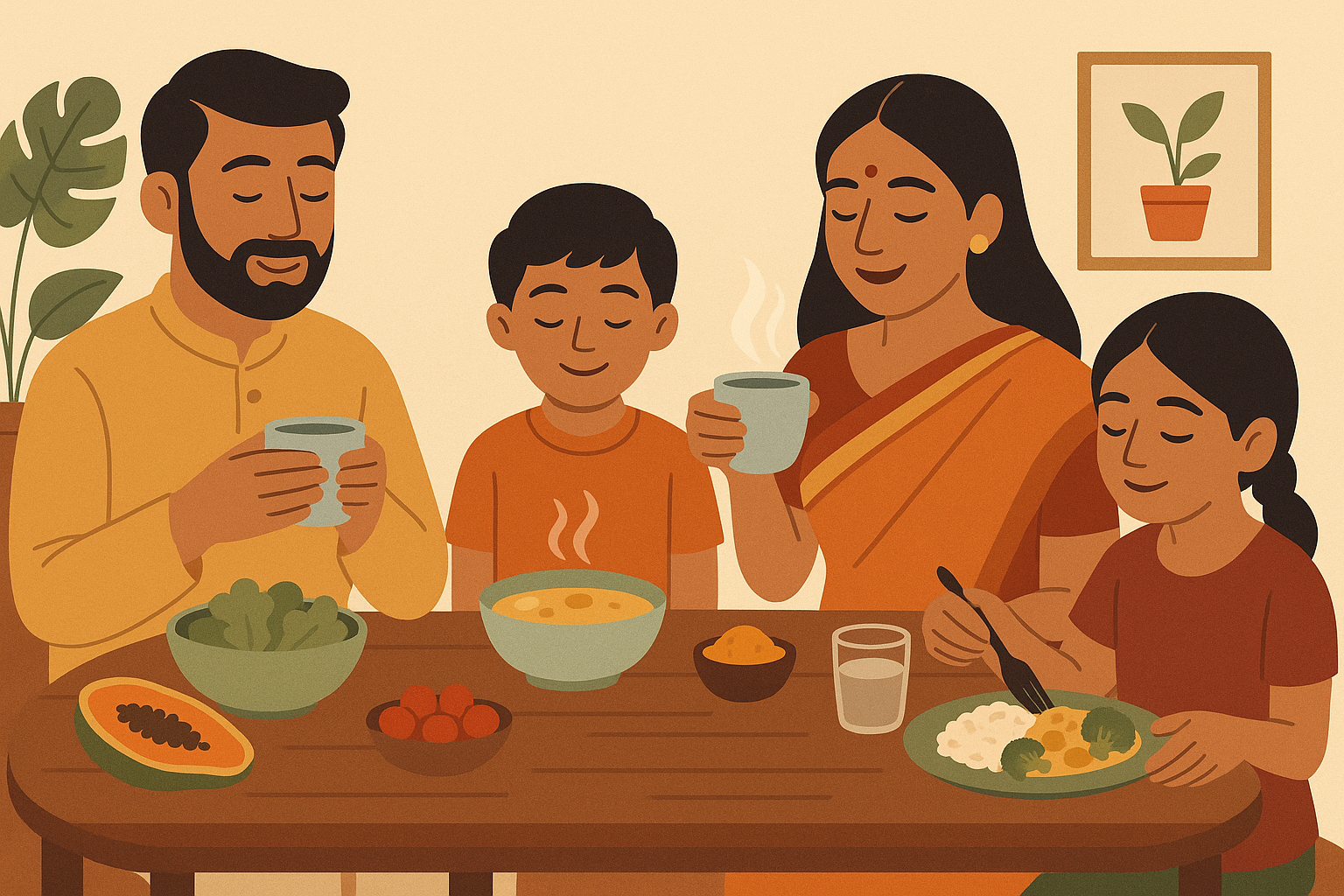
Final Thoughts
Look, I’m not going to lie and say this completely changed my life overnight. But my energy is better, my digestion improved, and my last blood test showed real improvement. More importantly, I don’t feel like I’m fighting my body anymore – I’m working with it.
Healing fatty liver through traditional Indian approaches isn’t about following a rigid meal plan – it’s about understanding how food, timing, preparation, and your unique constitution work together to support your body’s natural healing processes. The wisdom embedded in traditional Indian eating patterns offers a sophisticated therapeutic framework that modern medicine is only beginning to understand.
What makes this approach so powerful isn’t any single element, but how all these factors work together. Your meal timing supports your liver’s natural detox cycles. Your spice rotation prevents your body from getting used to the same compounds while targeting different healing pathways. Your hydration approach works with rather than against your body’s needs. Your location-specific modifications honor your environment while your cooking techniques preserve the therapeutic compounds you’re trying to access.
The beauty of this system lies in its flexibility – it adapts to your life rather than demanding you completely overhaul everything. Whether you’re dealing with coastal humidity in Chennai or dry heat in Rajasthan, whether you naturally run hot or cold, whether you have 20 minutes or 2 hours for meal prep, these principles can be modified to fit your reality while maintaining their healing power.
Don’t stress if you mess this up sometimes – I still eat dinner at 9 PM when work gets crazy. Progress, not perfection. Remember, your liver has an incredible capacity for regeneration when given the right support. These traditional approaches work because they address the root causes of fatty liver – poor digestion, toxic accumulation, metabolic dysfunction, and constitutional imbalance – rather than just managing symptoms. The key is consistency and patience, allowing these gentle but powerful methods to work their magic over time.
If this feels overwhelming, just pick one thing. Maybe it’s eating your biggest meal earlier, or maybe it’s adding some ginger to your morning routine. Start there. As these become natural habits, gradually incorporate more elements until you’ve created a comprehensive healing lifestyle that feels sustainable and enjoyable rather than restrictive and medicinal.
I’m not a doctor, and what worked for me might not work exactly the same for you. But these are the things that made a real difference in my healing journey, and I hope sharing them helps you find what works for you.

